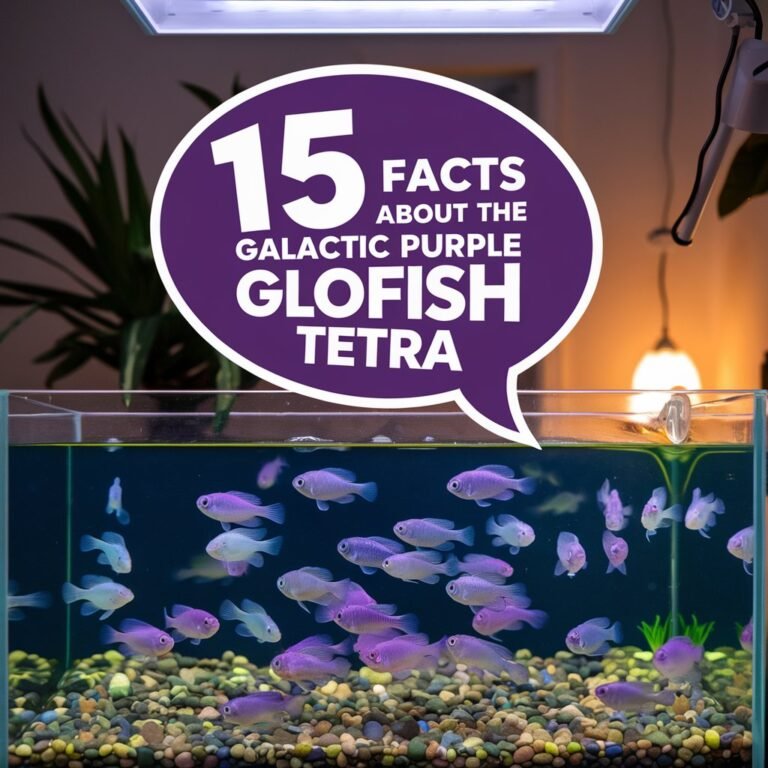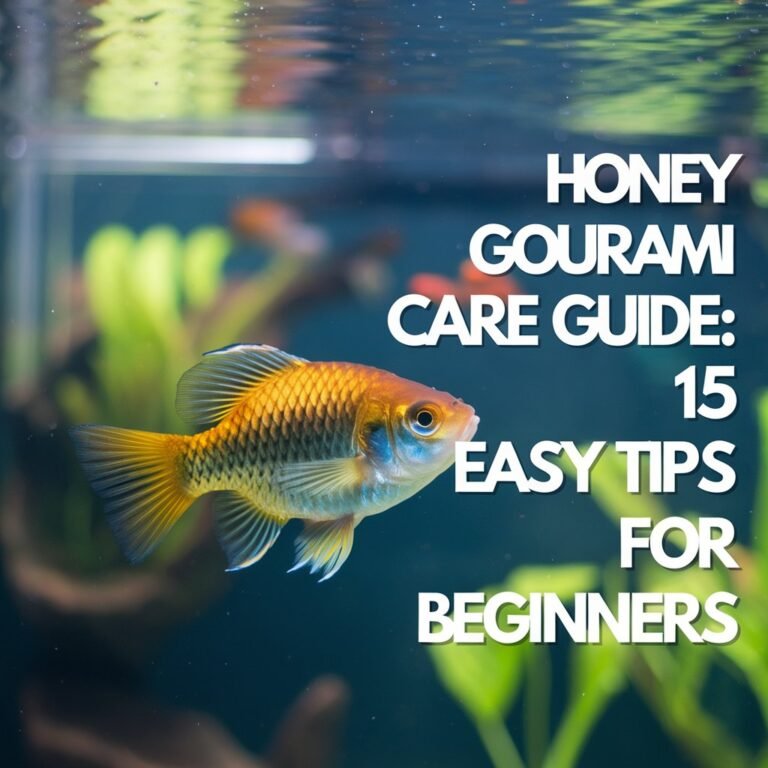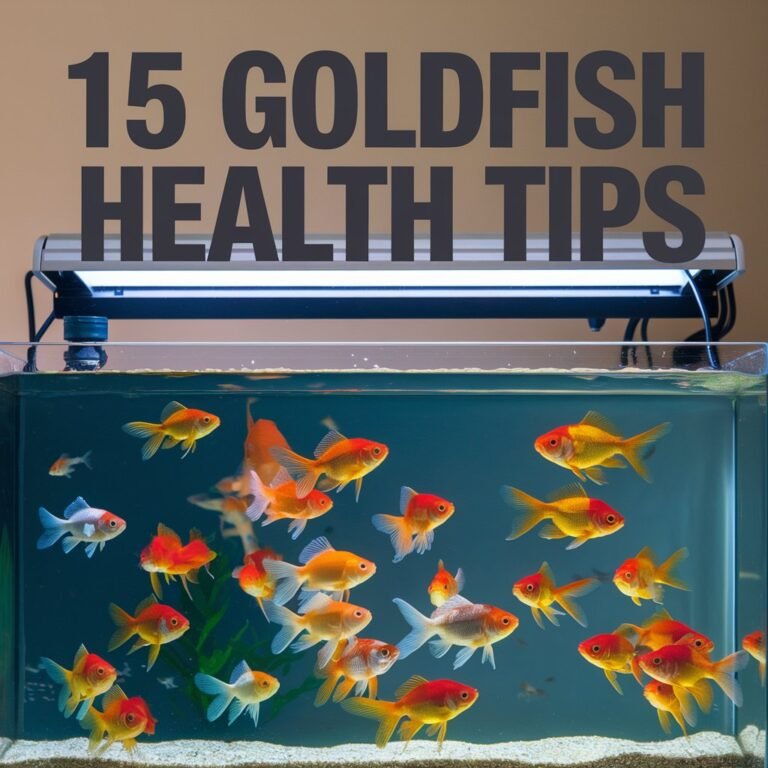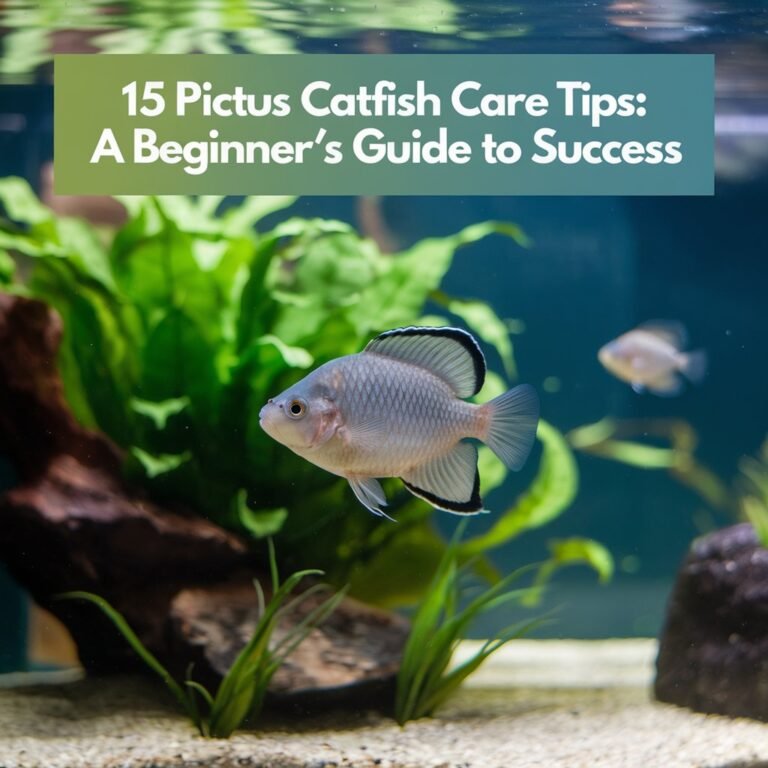15 Easiest Fish to Take Care of for Beginners
As you consider starting your aquarium-keeping journey, you’re likely thinking about the best fish to begin with. Choosing the right species can make all the difference between a thriving tank and a disappointing one.
Fortunately, there are many easy-to-care-for fish perfect for beginners, and we’ve identified the top 15 species for 2024. But what makes these fish stand out, and which ones are the most suitable for your specific setup? From the hardy Betta Fish to the adaptable Neon Tetra, we’ll explore the characteristics and needs of these beginner-friendly fish, helping you make an informed decision for your aquarium.
In A Nutshell
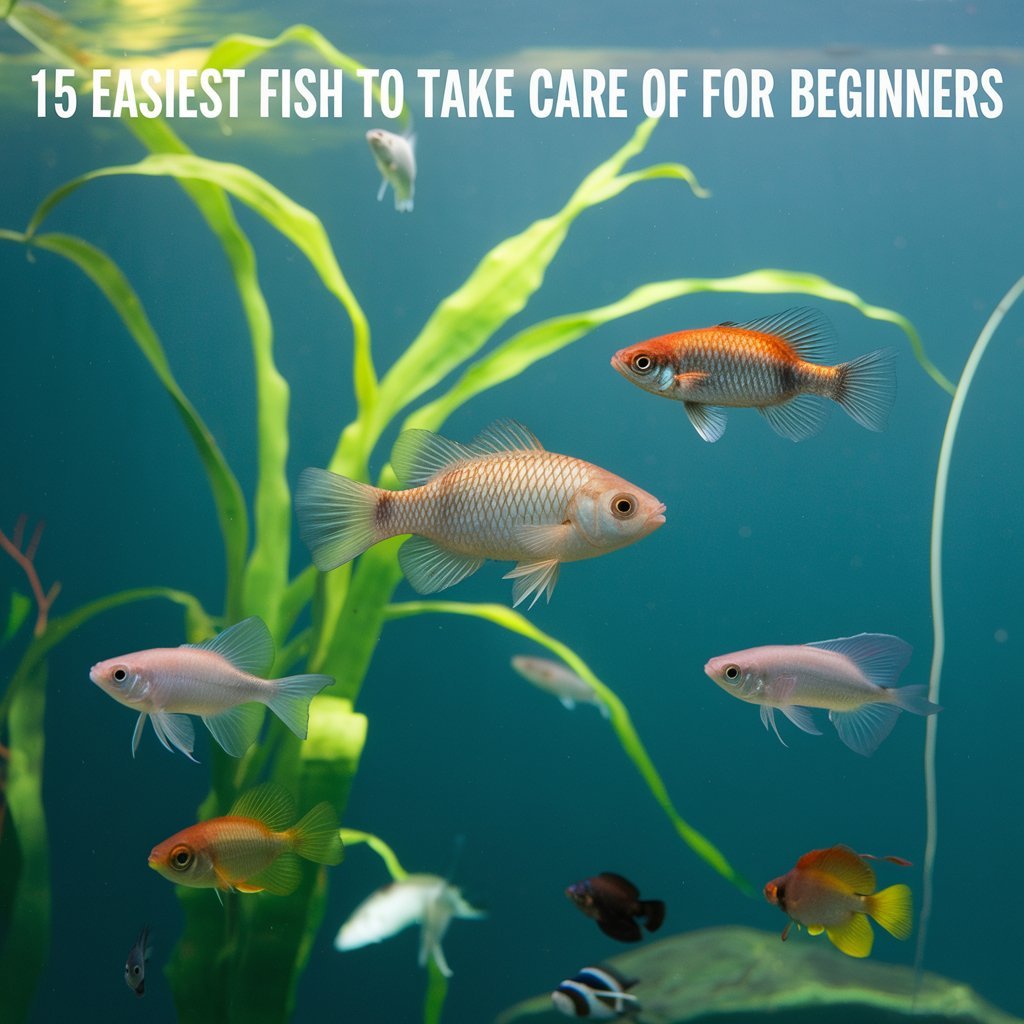
- For beginners, start with hardy fish like Guppies, Neon Tetra, or Zebra Danio that are easy to care for.
- Choose fish that thrive in small tanks, such as 5-10 gallons, to minimize equipment costs and maintenance.
- Select peaceful fish that school together, like Harlequin Rasboras or White Cloud Mountain Minnows, for a stress-free aquarium.
- Research fish with simple dietary needs, like Platies or Corydoras Catfish, that can thrive on commercial flake food.
- Consider fish with long lifespans, such as Dwarf Gouramis or Corydoras Catfish, for a long-term aquarium companion.
Guppies for Beginners
As you start exploring the world of aquarium-keeping, guppies are an excellent choice for beginners.
They’re relatively low maintenance, easy to care for, and can thrive in small tanks with proper conditions. Guppies are prolific breeders, and you’ll need to take into account this when setting up your tank.
If you’re interested in guppy breeding techniques, it’s vital to separate males and females, as they can breed quickly, leading to overpopulation.
When choosing tank mates for your guppies, it’s paramount to select peaceful, community fish that won’t harass or compete with them for food.
Avoid fin-nippers, as guppies have long, flowing tails that can be easily damaged. Suitable guppy tank mates include neon-like fish, such as harlequin rasboras or lemon tetras.
However, research the specific needs and compatibility of any fish before adding them to your tank.
To guarantee a healthy environment, maintain good water quality, provide plenty of hiding places, and offer a varied diet.
With proper care and attention, your guppies will thrive, and you’ll be well on your way to becoming a successful aquarium keeper.
Regular water changes and monitoring of water parameters are also vital for the well-being of your guppies.
Neon Tetra Fish
You’ve likely considered neon tetras as tank mates for your guppies, given their peaceful nature and compatibility.
Neon tetras are a popular choice for beginners, and for good reason. They’re relatively low-maintenance and easy to care for.
Regarding Tetra habitat, they thrive in well-planted aquariums with plenty of hiding places and open swimming space.
A minimum tank size of 10 gallons is recommended to accommodate their active swimming behavior.
When keeping neon tetras, maintaining ideal water conditions is vital.
They prefer soft, slightly acidic water with a temperature range of 72-82°F (22-28°C).
Regular water changes and a balanced diet are also pivotal for their health and well-being.
As Neon tankmates, neon tetras are best kept in schools of at least six to ten individuals.
This helps to reduce stress and promotes their natural schooling behavior.
By providing the right environment and care, you can enjoy the vibrant colors and energetic antics of these mesmerizing fish.
With proper care, neon tetras can live for up to 8-10 years, making them a great long-term companion for beginners.
Goldfish Care Tips
Goldfish are often misunderstood as low-maintenance pets, but they require specific care to thrive.
To keep your goldfish healthy, you’ll need a tank with a minimum capacity of 20 gallons for the first fish, and 10 gallons for each additional fish. This provides ample space for them to swim and reduces water quality issues.
When setting up your goldfish tank, choose decorations that promote water circulation and provide hiding places.
Plants, rocks, and driftwood are ideal goldfish tank decorations. Avoid using sharp or abrasive materials that can harm your fish.
If you’re interested in goldfish breeding, you’ll need a separate breeding tank with a capacity of at least 20 gallons.
Goldfish breeding tips include maintaining ideal water temperatures between 65-75°F (18-24°C) and providing a balanced diet.
You should also guarantee your goldfish are healthy and free of diseases before breeding.
Regular water changes, proper filtration, and a balanced diet are essential for keeping your goldfish healthy.
Monitor your fish for signs of illness and take prompt action if you notice any unusual behavior or symptoms.
Betta Fish Basics
Betta fish are relatively low-maintenance pets that thrive in small spaces, making them a popular choice for beginners.
When setting up a betta tank, you’ll want to prioritize a secure lid, as betta fish are notorious jumpers. A minimum tank size of 5 gallons is recommended, with a heater to maintain a temperature range of 76-82°F (24-28°C).
You’ll also need a filter to maintain water quality and a hiding place or two to reduce stress.
In terms of betta fish lifespan, you can expect your pet to live for around 3-5 years with proper care.
To guarantee a long and healthy life, you’ll need to perform regular water changes (about 25% every week) and maintain ideal water parameters. A balanced diet that includes a mix of commercial pellets and live or frozen foods will also help support your betta’s overall health.
Zebra Danio Fish
Zebra danio fish are an ideal choice for beginners due to their hardy nature and ease of care.
They thrive in a well-oxygenated environment with a spacious tank, ideally 10-20 gallons, with plenty of hiding places. You’ll want to replicate their natural zebra danio habitat, which consists of slow-moving rivers and streams with sandy or gravelly substrates.
Maintain a water temperature between 65-77°F (18-25°C) and pH levels ranging from 6.5-8.5.
As active swimmers, zebra danios are best kept in schools of at least six individuals to encourage their natural behavior.
Avoid keeping them with fin-nippers or aggressive fish, as they can be stressed easily.
In respect of zebra danio breeding, they’re prolific breeders and can be bred in captivity.
Provide a separate breeding tank with plenty of plants and a temperature range of 77-82°F (25-28°C).
Spawning occurs in the morning, and the adults should be removed after spawning to prevent egg predation.
With proper care and attention, zebra danios can live up to 5 years, making them a rewarding choice for novice aquarists.
Corydoras Catfish
Moving on to another popular beginner fish, the Corydoras catfish offers a unique set of characteristics that make them well-suited for a starter aquarium.
You’ll find that Corydoras catfish are relatively small, reaching lengths of 1-4 inches, and are easy to care for. They’re a schooling fish, so it’s best to keep them in groups of six or more.
Cory cat behavior is generally peaceful, and they’re great for community tanks.
When setting up your aquarium, consider the type of substrate you’ll use. Corydoras catfish are bottom-dwellers and prefer a soft, sandy substrate that won’t cause them harm.
Avoid using gravel or sharp rocks, as they can cause injury to your fish. A deep substrate will also allow your Corydoras catfish to burrow and forage for food, which is a natural behavior for them.
With regard to water parameters, Corydoras catfish are relatively adaptable and can thrive in a variety of conditions. They prefer temperatures between 72-82°F and pH levels between 6.5-8.0.
With proper care and attention, your Corydoras catfish can live for up to 8-10 years.
Harlequin Rasboras
Harlequin Rasboras are another popular choice for beginners, offering a vibrant splash of color to your aquarium.
These peaceful fish thrive in schools, making them an excellent choice for community tanks. When it comes to Rasbora socialization, crucially, you must keep them in groups of at least six to eight individuals.
This will help to distribute aggression and create a more natural environment.
In terms of care, Harlequin Rasboras are relatively low-maintenance.
They prefer soft, slightly acidic water with temperatures between 72°F and 82°F. A well-planted tank with plenty of hiding places will help to reduce stress and promote healthy growth.
When it comes to feeding, Harlequin Rasboras are omnivores and will accept a variety of foods, including high-quality flakes, pellets, and live or frozen treats.
Rasbora breeding can be a bit challenging, but it’s not impossible.
To encourage breeding, provide a separate tank with plenty of plants and a temperature range of 78°F to 82°F.
Males will display vibrant colors and perform complex courtship rituals to attract females.
With proper care and attention, you may be able to witness the miracle of Rasbora breeding in your own aquarium.
Platies Fish Care
When setting up a tank for platies, you’ll want to focus on creating a peaceful environment that mimics their natural habitat.
This includes a tank size of at least 10 gallons with plenty of plants, rocks, and open swimming space. Platies are a hardy species, but they still require proper water conditions: temperature between 72-82°F, pH 6.8-8.5, and moderate water hardness.
In terms of diet, platies are omnivores and will thrive on a balanced diet of commercial flake food, pellets, and live or frozen foods like brine shrimp and bloodworms.
Avoid overfeeding, as this can lead to poor water quality and stress on the fish.
Platies are prolific breeders, and Platy breeding can be a fun and rewarding experience for beginners.
However, be aware that Platies are prone to certain diseases, such as Ich and velvet disease.
Regular water changes, proper nutrition, and a clean tank will help prevent these Platy diseases.
Monitor your fish closely for signs of illness, and take action quickly if you notice any unusual behavior or symptoms.
With proper care and attention, platies can make wonderful and colorful additions to your aquarium.
Swordtail Fish
Setting up a swordtail fish tank requires careful consideration of their specific needs, as these active swimmers thrive in environments that mimic their natural habitats.
You’ll need to provide a spacious tank with plenty of open swimming space, as well as plants and decorations to create hiding places and visual interest. Swordtail fish are native to warm, freshwater environments, so you’ll need to maintain a temperature range of 72-82°F (22-28°C) and pH levels between 6.8-8.5.
When it comes to Swordtail breeding, it’s crucial to provide a separate breeding tank with plenty of plants and a gentle water current.
Swordtail fish are livebearers, which means they give birth to live young rather than laying eggs. A healthy breeding pair can produce up to 20-30 offspring per spawn. Swordtail colors vary, but most species display vibrant shades of red, orange, yellow, and green.
You can expect your swordtail fish to grow up to 3-5 inches in length, making them a great addition to a community tank. With proper care and attention, swordtail fish can thrive in your aquarium and provide hours of entertainment.
Lemon Tetras
Moving from the active swimmers like swordtail fish, you may want to ponder a schooling species that can add a mesmerizing display to your aquarium.
Lemon tetras are an excellent choice for beginners, as they’re relatively low-maintenance and easy to care for. These small, peaceful fish thrive in schools, so it’s best to keep them in groups of at least six to ten individuals.
In terms of Lemon tetra behavior, they’re naturally skittish and tend to dart around when startled.
However, they can become more confident and calm in a well-established aquarium with plenty of hiding places.
When it comes to their habitat, Lemon tetras prefer soft, slightly acidic water with temperatures between 72°F and 82°F (22°C and 28°C).
They’re native to the Amazon River basin, so they’re adapted to living in areas with dense vegetation and open swimming spaces.
To replicate their natural habitat, you can add plants like Java moss or Anacharis to your aquarium, along with some driftwood or rocks to provide hiding places.
With proper care and attention, Lemon tetras can be a stunning addition to your aquarium, adding a burst of energy and color to your underwater world.
Dwarf Gouramis
How do you choose a fish that’s both visually striking and easy to care for? For many beginners, the dwarf gourami is an excellent choice.
These vibrant fish are native to South Asia and thrive in warm, slow-moving waters. When creating a dwarf gourami habitat, aim for a 10-20 gallon tank with plenty of hiding places and plants.
Maintain a temperature range of 72-82°F (22-28°C) and a pH between 6.8-8.5.
A well-balanced dwarf gourami diet is essential for their health and coloration. Provide a mix of high-quality commercial pellets or flakes, supplemented with live or frozen foods such as brine shrimp, bloodworms, or daphnia.
You can also offer vegetables like zucchini or spinach. Avoid overfeeding, as dwarf gouramis are prone to obesity. Feed them 2-3 times a day, only as much as they can consume within a few minutes.
When choosing tankmates for your dwarf gourami, select peaceful, small fish that won’t harass them. Avoid fin-nippers, as dwarf gouramis are known for their long, elaborate fins.
With proper care and attention, dwarf gouramis can live up to 4-6 years, providing you with a stunning and low-maintenance aquarium companion.
Mollies Fish Care
If you’re looking for another beginner-friendly fish that’s both visually striking and easy to care for, consider mollies.
Mollies are small, peaceful fish that thrive in well-planted aquariums with open swimming spaces. When creating a mollies habitat, maintain a water temperature between 72°F to 82°F and a pH range of 7.0 to 8.0.
Use a mix of live plants and decorations to provide hiding places and visual interest.
Mollies are livebearers, which means they give birth to live young.
They can breed easily in captivity, but it’s crucial to separate the males from the females if you don’t want them to breed. Mollies breeding can occur rapidly, leading to overcrowding if not managed.
A general rule of thumb is to keep one male to three or four females.
To promote healthy breeding, guarantee your aquarium has plenty of hiding places and provide a varied diet that includes high-quality commercial flake food, frozen foods, and live foods.
White Cloud Mountain
Among the easiest fish to care for, White Cloud Mountain minnows are a popular choice for beginners due to their hardiness and adaptability.
These peaceful fish thrive in cooler temperatures, typically between 65-75°F, and can tolerate a pH range of 6.0-8.0. Originating from the mountain streams of China, they’re well-suited for aquariums that mimic their natural mountain habitat.
When setting up a tank for White Cloud Mountain minnows, you’ll want to create a spacious environment with plenty of hiding places and open swimming areas.
A 10-gallon tank is a good starting point, with a mix of plants, rocks, and driftwood. Avoid overcrowding, as this can lead to stress and disease.
One of the most enjoyable aspects of keeping White Cloud Mountain minnows is observing their Cloud schooling behavior.
They’re a schooling fish that prefer to be in groups, so it’s best to keep them in schools of at least six or more. This will help them feel secure and encourage their natural behavior.
By providing a suitable environment and proper care, you’ll be able to enjoy the beauty and tranquility of these fascinating fish.
They’re an excellent choice for beginners and experienced aquarists alike.
Cherry Barbs Fish
You’ll find another peaceful and adaptable species in Cherry Barbs, a popular choice for beginners that thrive in similar cooler temperatures to White Cloud Mountain minnows.
They’re relatively small, reaching about 1-2 inches in length, and can be kept in schools of 6-10 individuals. When it comes to Cherry Barb breeding, you’ll need to provide a separate breeding tank with plenty of plants and a temperature range of 72-82°F (22-28°C).
The male will display vibrant colors and perform a courtship dance to attract the female.
In terms of Cherry Barb diet, they’re omnivores and will eat a variety of foods including high-quality commercial flakes, pellets, and live or frozen foods like brine shrimp and bloodworms.
They also appreciate vegetable-based foods like spirulina and algae. A balanced diet will help bring out their vibrant red coloration.
Cherry Barbs are relatively low maintenance and can tolerate some water parameter fluctuations, making them a great choice for beginners. However, they still require regular water changes and a well-maintained tank to thrive.
With proper care, Cherry Barbs can live for up to 5-7 years in captivity.
Peaceful Guppies
One of the most recognizable and popular freshwater aquarium fish, Peaceful Guppies are a staple for beginners.
They’re easy to care for, breed, and maintain, making them an ideal choice for those new to aquarium-keeping. When setting up a Guppy habitat, you’ll want to provide a tank with a minimum capacity of 5 gallons, plenty of hiding places, and a mix of live plants and open swimming space.
Peaceful Guppies are omnivores and require a balanced diet rich in protein.
You’ll want to provide high-quality commercial flake or pellet food, supplemented with live or frozen foods like brine shrimp or bloodworms. Guppy nutrition is vital for maintaining their vibrant colors and overall health. Aim to feed them 2-3 times a day, only as much as they can consume within a few minutes.
Overfeeding can lead to digestive issues and poor water quality.
When introducing Peaceful Guppies to your tank, you must ensure you maintain perfect water parameters, including a pH range of 7.0-8.0 and a temperature range of 72-82°F.
Regular water changes and proper filtration will help keep your Guppies healthy and thriving.
Frequently Asked Questions
Can I Keep Fish in a Bowl Without a Filter?
Keeping fish in a bowl without a filter requires regular bowl maintenance to maintain water quality. You’ll need to change water frequently and monitor ammonia levels to prevent fish stress and disease, ensuring a healthy environment.
How Often Should I Change Aquarium Gravel?
You’ll need to change aquarium gravel regularly, ideally every 1-3 months. Establishing a gravel cleaning schedule helps maintain peak water quality. Gravel maintenance tips include siphoning debris and replacing 10-20% of gravel during each cleaning cycle.
Can I Mix Cold and Tropical Fish Together?
You shouldn’t mix cold and tropical fish without considering water parameters and tank compatibility. Tropical fish require warmer temperatures, while cold-water fish prefer cooler temperatures, making it challenging to find a mutually compatible environment.
How Long Do Fish Sleep at Night?
You observe that fish don’t sleep like humans, they experience a state of reduced activity called “fish slumber.” Their nocturnal habits vary, but they typically rest for short periods, around 4-8 hours, at night or in hiding places.
Can I Feed My Fish Human Food?
You’re considering feeding your fish human food, but avoid giving them food scraps or table leftovers as they can be high in salt, fat, and other nutrients toxic to fish, disrupting their digestive balance.
FInal Verdict
You’ve now explored the top easiest fish to care for in 2024, perfect for beginners. These species, including Guppies, Neon Tetra, Goldfish, Betta Fish, Zebra Danio, Mollies, White Cloud Mountain, and Cherry Barbs, are hardy and adaptable.
By understanding their basic needs and requirements, you’ll be well on your way to creating a thriving aquarium. Remember to research each species’ specific needs to guarantee a healthy environment for your fish.
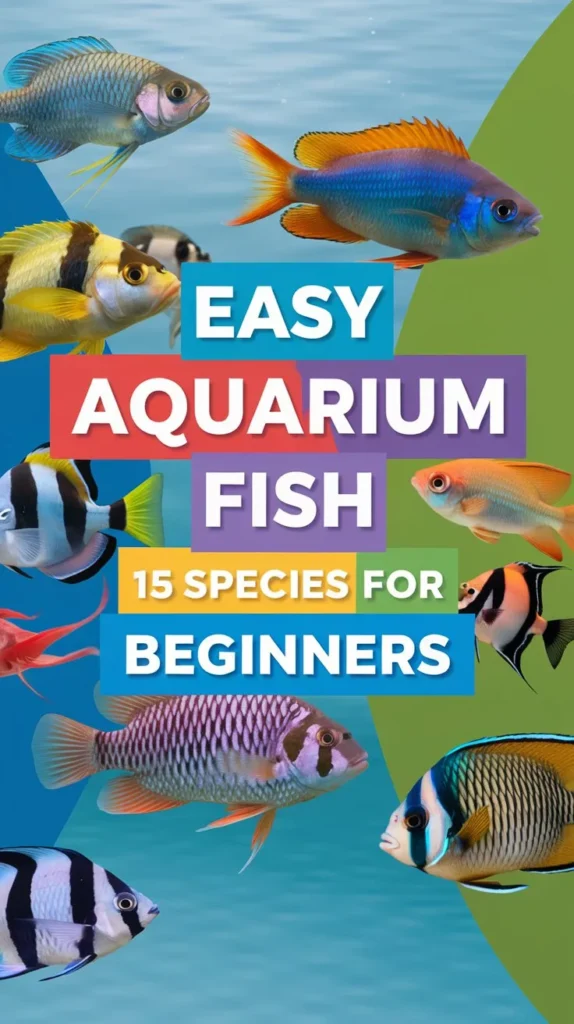
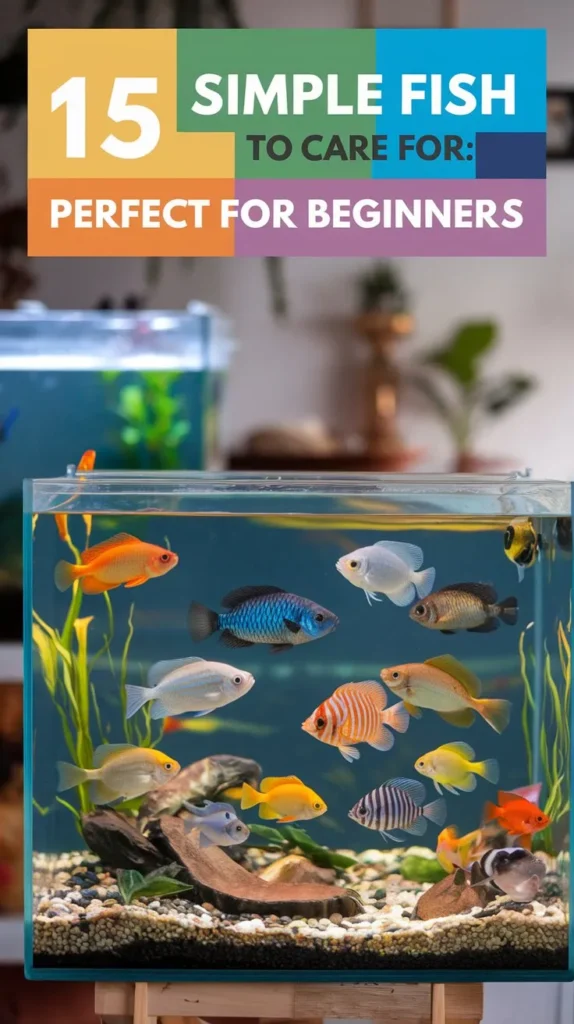
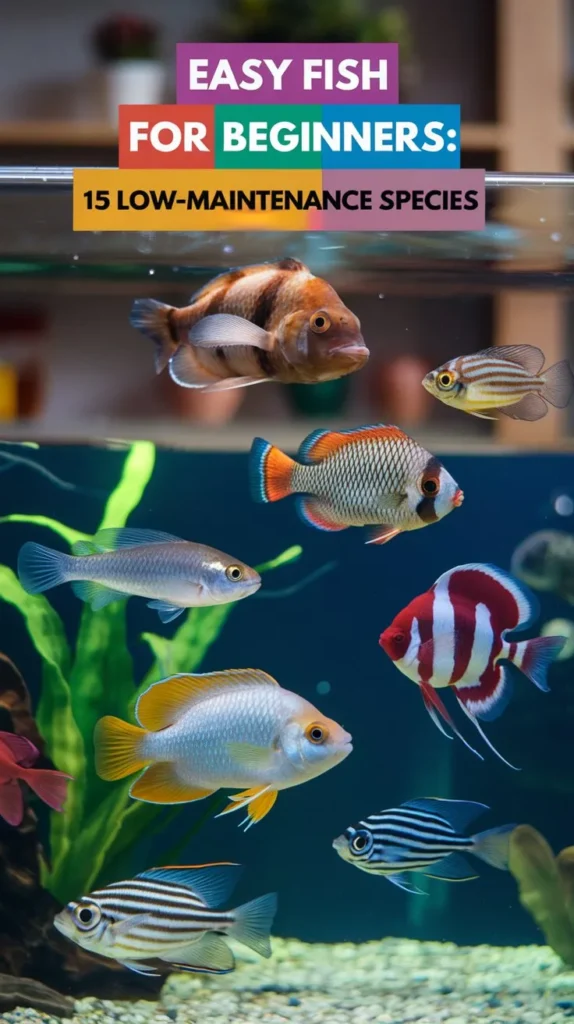
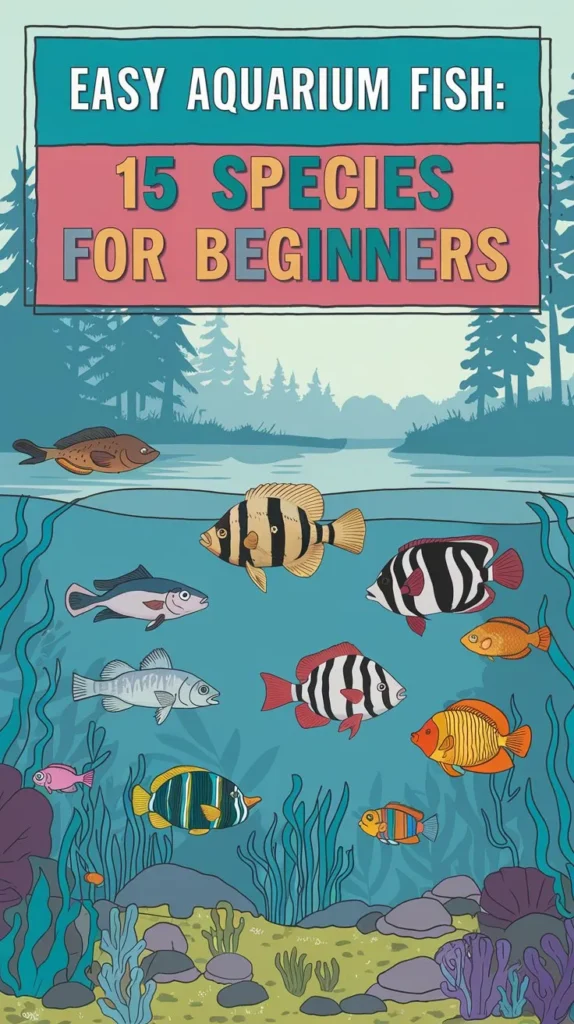
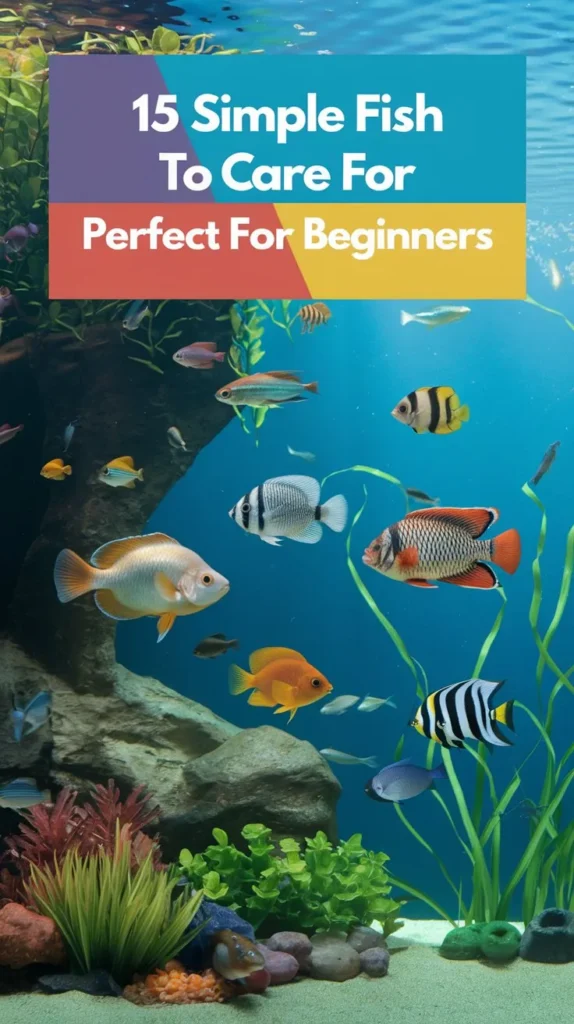

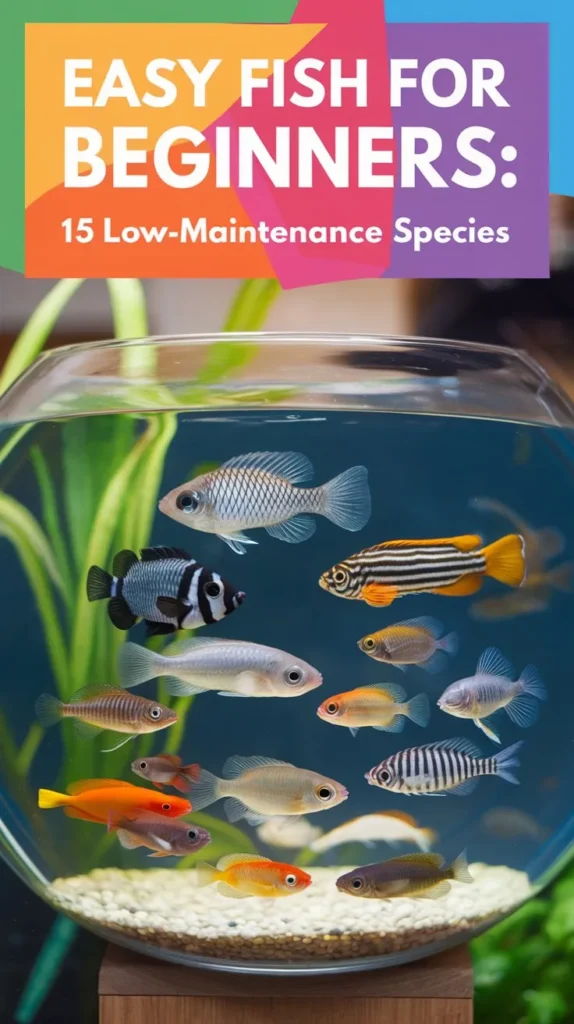
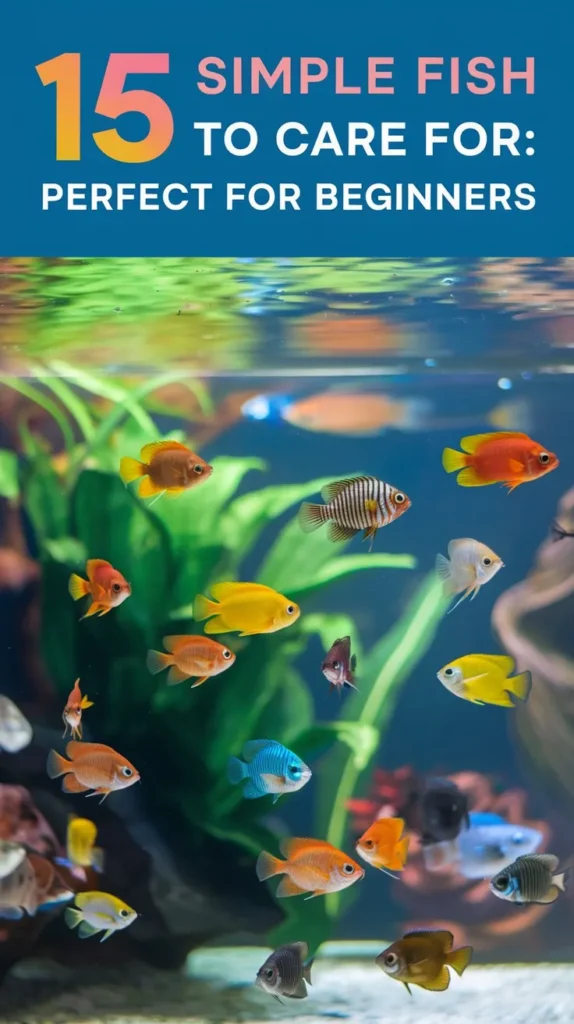

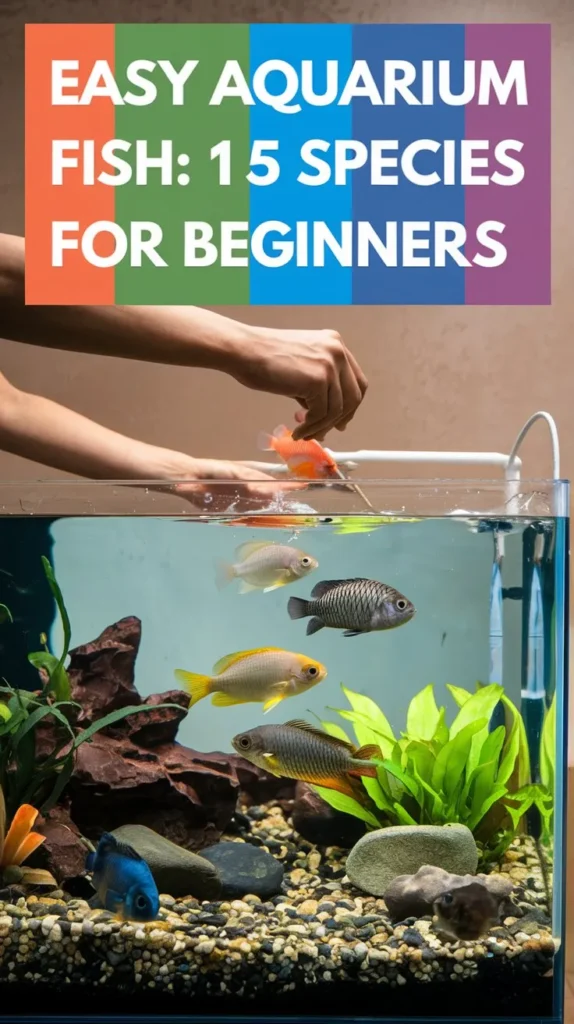
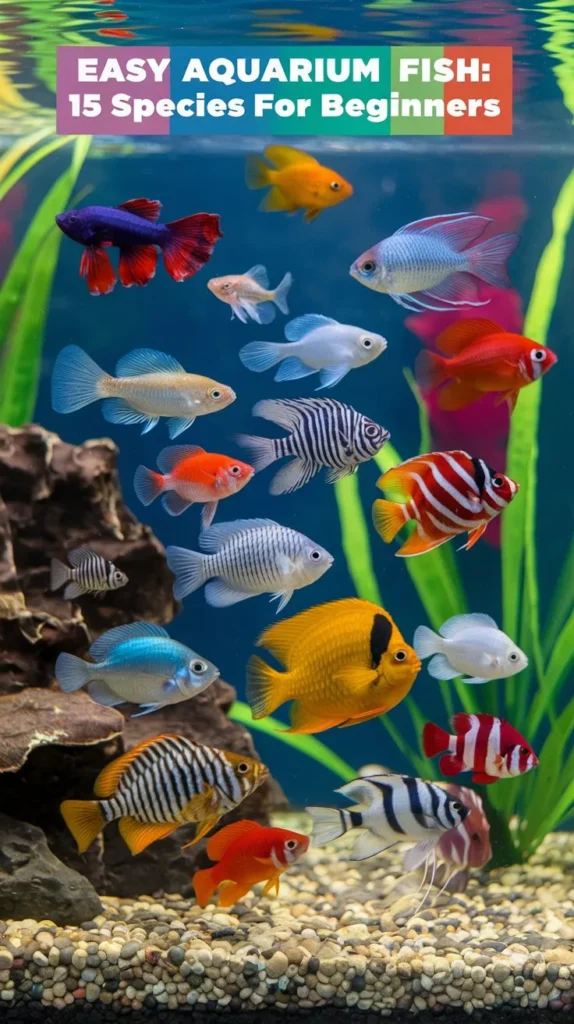

Hello, I’m Aria Cooper, the heart and soul behind Swimmy Buddies. As a devoted fish aficionado, I share my aquatic adventures and expertise to inspire your own underwater explorations. 🐠🌊


